Seagate's GoFlex Desk 4TB External HDD Review
by Anand Lal Shimpi on September 10, 2011 9:27 PM EST- Posted in
- Storage
- Seagate
- GoFlex Desk
- 4TB
I'm off to IDF this week while Ryan and Brian cover Microsoft's BUILD conference, so expect lots of CPU and Windows 8 news in the coming days. Just before I left however Seagate sent me a review sample of its recently announced GoFlex Desk 4TB drive. Eager to find out if anything had changed since I reviewed last year's 3TB model I dove right into testing.
Seagate's GoFlex Desk is a line of external 3.5" hard drives with interchangeable GoFlex Desk docks. Internally all GoFlex Desk drives have a standard Seagate 3.5" SATA hard drive; it's the GoFlex Desk dock that converts SATA into USB 3.0, USB 2.0 or FireWire 800. Since 3.5" drives require more power than you can get out of a single USB port, Seagate's GoFlex Desk requires an external power adapter that comes with the drive.
Although the SATA power and data connectors on the GoFlex Desk are in a standardized location, to date all 3rd party implementations of Seagate's GoFlex spec have been designed for 2.5" drives. As a result the only real advantage to this being a GoFlex drive is that you can swap out docks to get support for different interfaces.
By default the GoFlex Desk bundle comes with a USB 3.0 dock that's obviously backwards compatible with USB 2.0 ports. Seagate offers an optional USB 2.0/FireWire 800 dock, presumably for Mac users with FireWire 800 ports. The dock features five LEDs, one for power and the other four indicate capacity used in 25% increments.
Seagate sent me the standard 4TB USB 3.0 bundle; with it you get the drive, power adapter and a USB 3.0 cable. The drive comes preloaded with Seagate's Dashboard as well as Memeo Instant Backup. Seagate will part with a 4TB GoFlex Desk bundle for $249.
As I mentioned in our initial post on the 4TB GoFlex Desk, Seagate uses a 5-platter 7200RPM 3.5" 6Gbps SATA Barracuda hard drive inside the GoFlex Desk. At 4TB that works out to be 800GB per platter.

The spec for hard drive storage capacity is done in base 10 where 1TB = 1 trillion bytes. That works out to be 3725GiB of storage on the GoFlex Desk 4TB. We've addressed the issue with hard drives greater than 2TB in previous articles, the same discussion applies here.
A Redesigned Chassis
Despite retaining the name, the 4TB GoFlex Desk introduces a new external enclosure. It's sleeker and more angular than last year's, but more importantly it has better cooling properties. For now it looks like you can only get the new chassis if you buy the 4TB drive, the smaller capacities still ship with the old chassis.
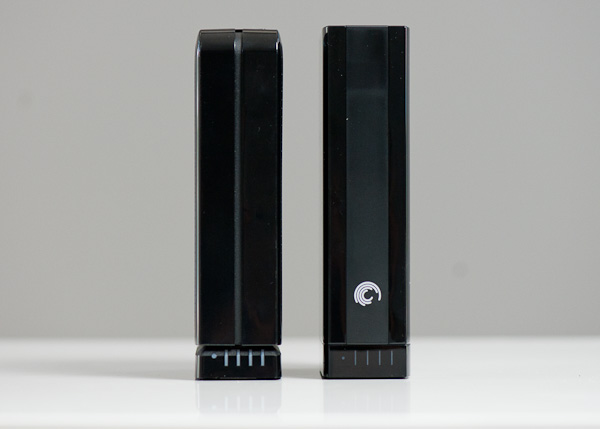
Seagate GoFlex Desk 3TB 2010 (left) vs. GoFlex Desk 4TB 2011 (right)
In our review of the 3TB GoFlex Desk we found that under hours of continued use the drive got quite warm: up to 69C. The high temperatures resulted from two things: the GoFlex Desk enclosure had very little ventilation and the 5-platter 7200RPM drive inside put out a lot of heat. With the move to 4TB Seagate stuck with a 5-platter 7200RPM design, but gave the enclosure more holes for ventilation:

Seagate GoFlex Desk 3TB 2010 (left) vs. GoFlex Desk 4TB 2011 (right)
The top and back of the new GoFlex Desk are vented to bring down drive temperatures. The old design had dents that looked like holes but they were simply to give the plastic texture, they weren't functional. Western Digital's My Book Essential is still better ventilated but this is definitely a step in the right direction.
The new chassis definitely keeps temperatures cooler for longer under light usage, however if you're copying a lot of data to the GoFlex Desk temperatures will climb. After one hour of sequential writes over USB 3.0 I measured a drive temperature of 63C. In just under 2 hours the drive got up to 67C, a bit lower than last year's model but still troubling. The good news is unlike last year's model, the drive will continue to operate at full performance in this state. When testing the 3TB version last year we found that sequential write speeds dropped to 50MB/s when the temperature got into the upper 60s.
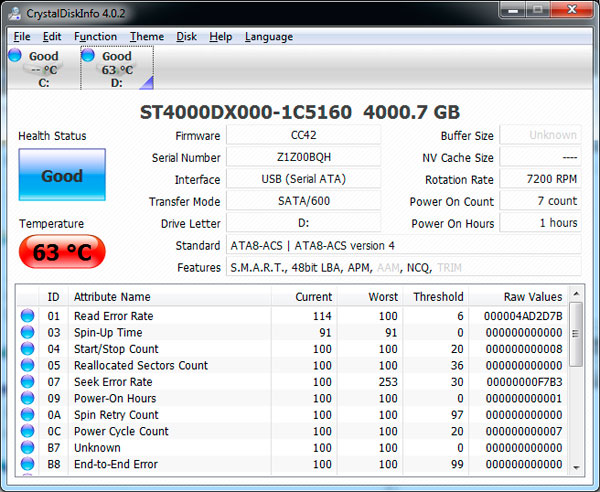
Granted that's after copying nearly 1TB of data without pause, so you shouldn't see these numbers other than the very first time you copy all of your data to the drive. During normal use and even when moving around a couple hundred GB of data the 4TB GoFlex Desk kept to 51C and below. I'm happy to see that Seagate redesigned the chassis, but I'd still feel more comfortable with even more ventilation or at least a cooler running drive inside.
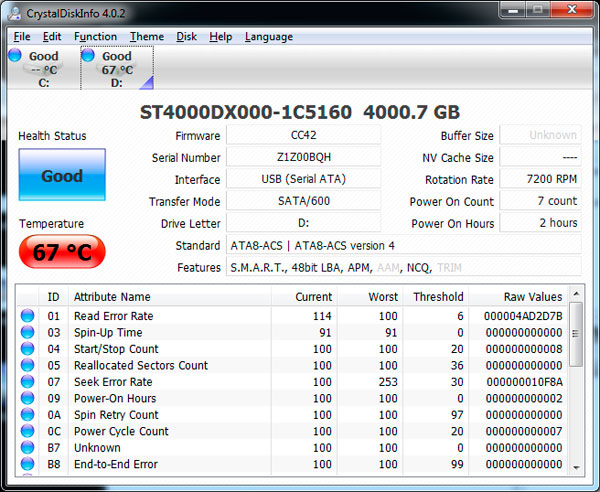
The internal Barracuda + USB 3.0 dock consume 11.9W at idle and 13.7W under load. The drive whine is audible when on but it's not overly loud. If you're using anything other than a very quiet notebook you'll likely not be too bothered by the drive.


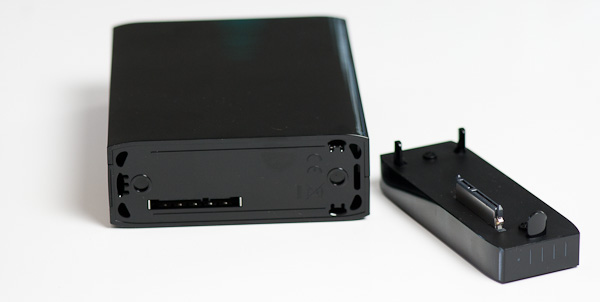
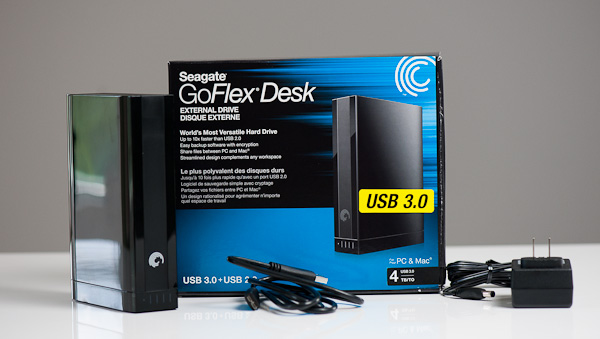






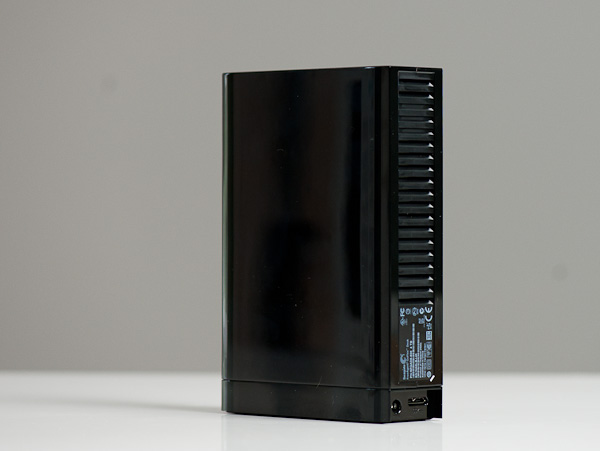








34 Comments
View All Comments
Etern205 - Monday, September 12, 2011 - link
Why doesn't Seagate just have every kind of adapter on the drive rather than go with swappable interfaces?repoman27 - Tuesday, September 13, 2011 - link
Are these transfer rates for BOT or UASP modes? Any idea what chips is this device using to bridge SATA to USB 3.0?Googer - Saturday, October 1, 2011 - link
Still no e-sata benchmarks that we were promised.KenSorensen - Monday, May 21, 2012 - link
Can anybody recommend an affordable & RELIABLE Backup External Drive?I have had 3 of these things quit on me! One had a Five year warranty, but you can't get any satisfaction from these guys. They seem to have the market cornered and feel any crap will do. Every one of them lost the abiliity for computers to recognize them, so you can do nothing with them including retrieving my data. I have attempted to get info from them on numerous occasions but never any satisfaction. Their answer is always pay us $299 and we will get your data back. Whats the point of backing it up if the backup keeps breaking down? Seagate Products gets the Two Thumbs Down from Me. Extremely Unhappy!